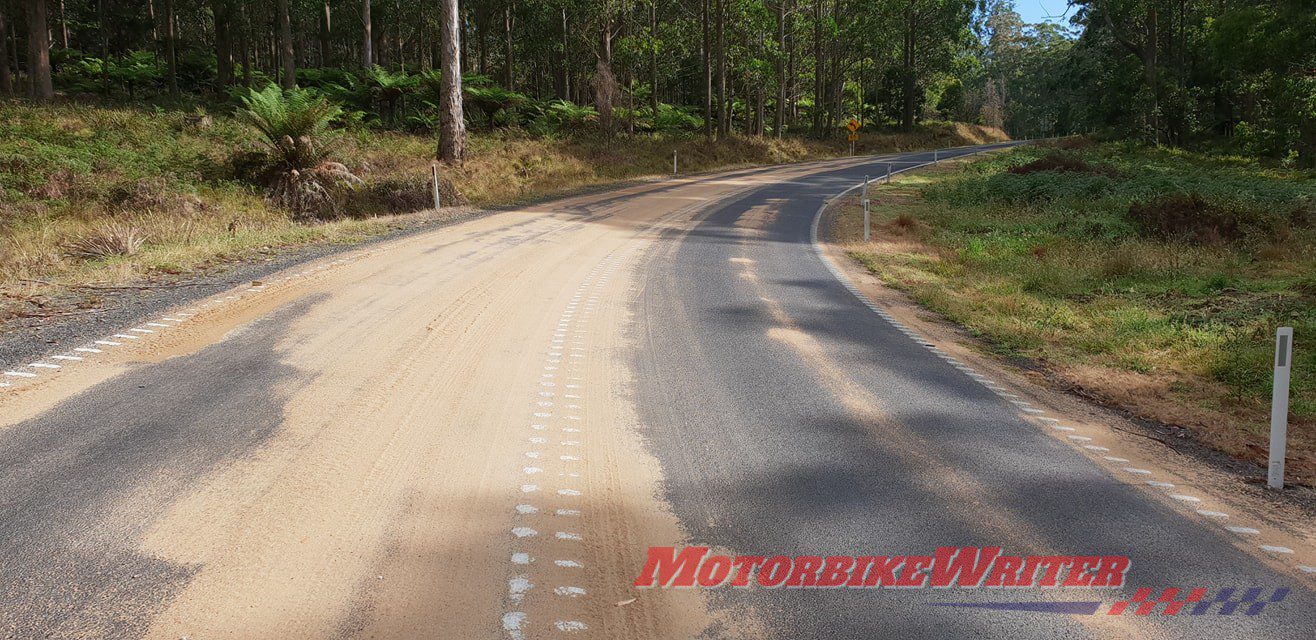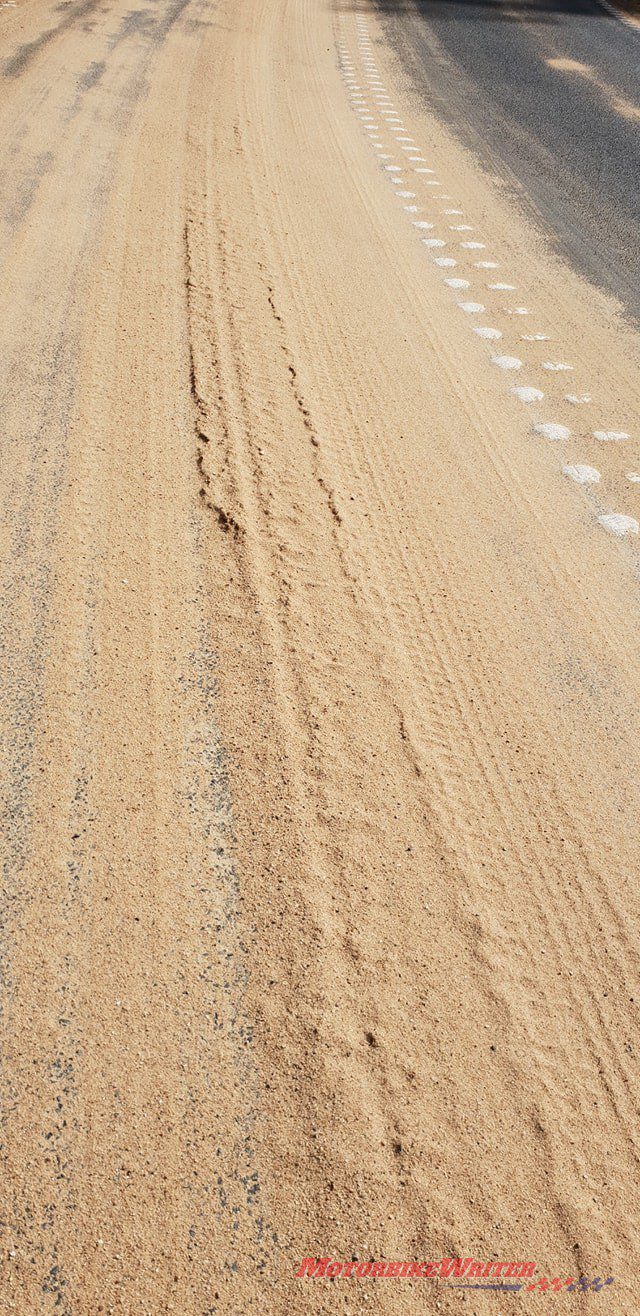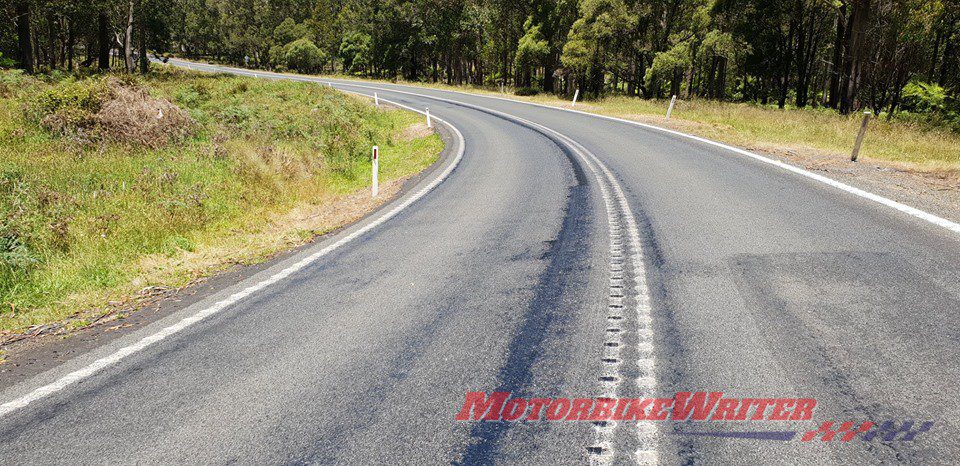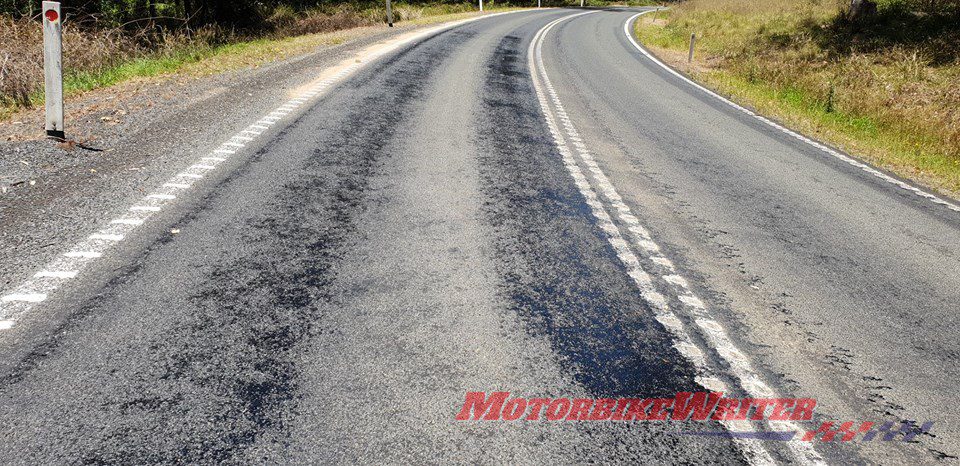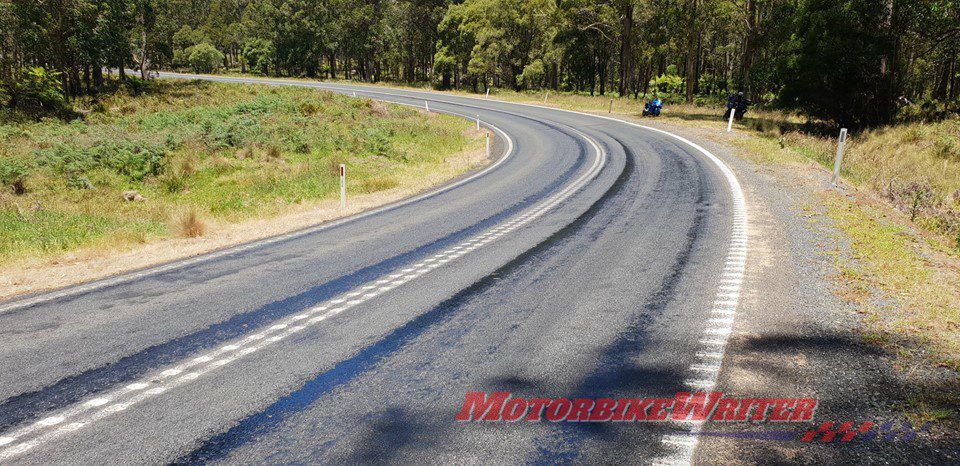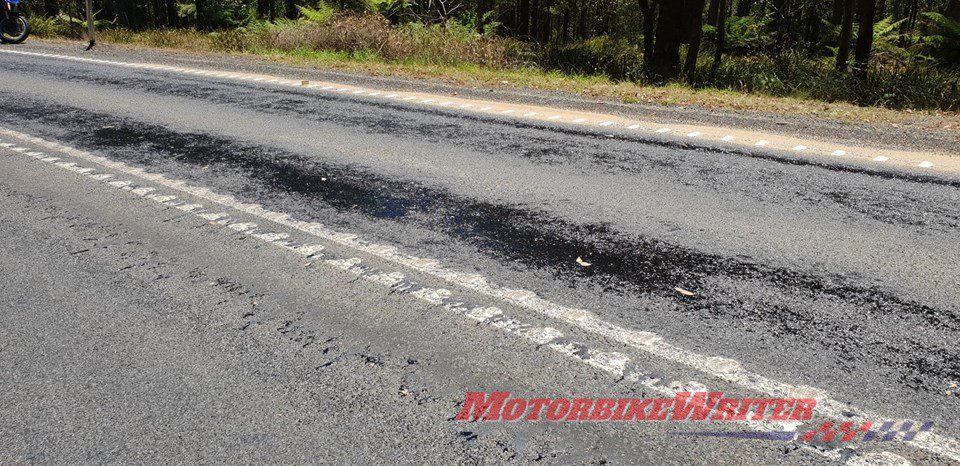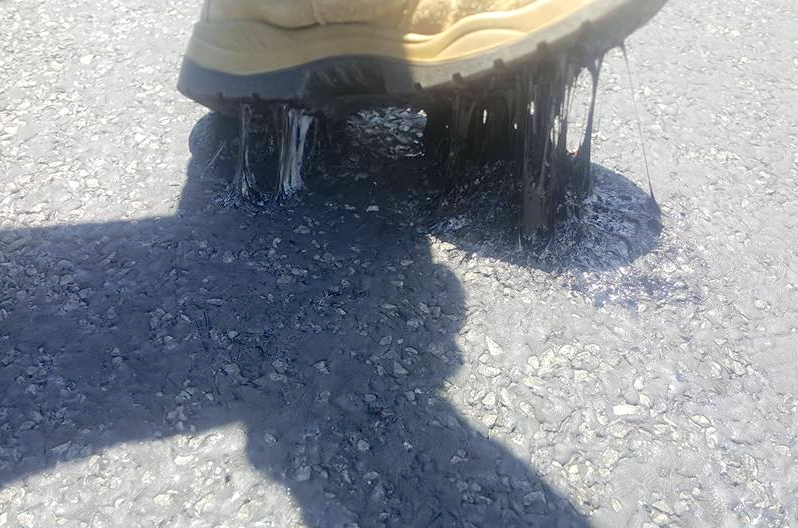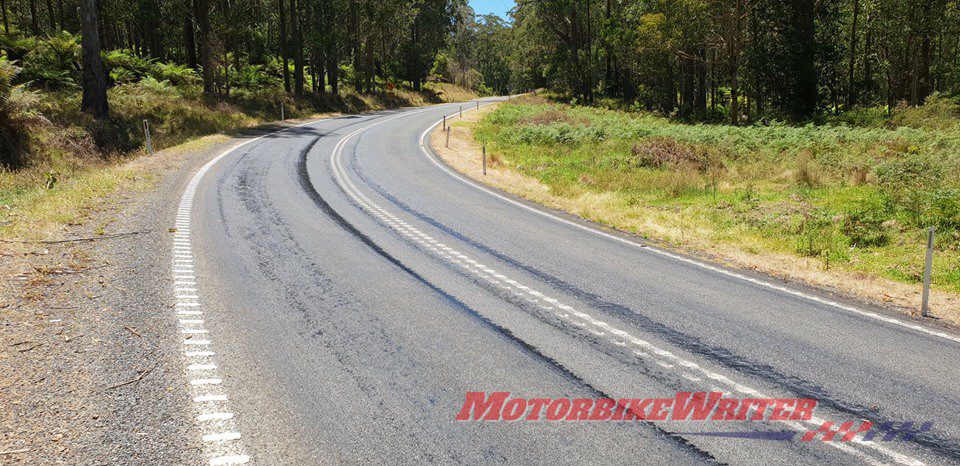The recent over-application of sand on the Oxley Highway to fix slippery melting tar is a short-term fix that has outraged many riders.
Since we published an article about the thick sand across the road, Roads and Maritime Services have been actively sweeping the road.
However, Motorcycle Council of NSW chairman Steve Pearce says it is “very disappointing to see this work without any consideration for motorcyclists”.
“You could easily come to the conclusion that Melinda Pavey doesn’t want motorcyclists to use this road, remember it was just a year ago when the speed limit was dropped,” he says.
Warning signs have also been posted on the area of road 25km west of Gingers Creek not far past the 80km/h zone.
The road began melting a few weeks ago in the heat. These photos were taken when the temperature was 31C.
After the images were posted, RMS spread thick sand over the road in what independent road surface expert and rider Ian Kite says is a short-term fix only.
Melting tar cause
The 40-year local government infrastructure manager and lecturer in road construction, pavement design and bitumen sealing says the technical term for the melting tar is “bleeding”.
“The cause of the problem is the aggregate in the seal being completely submerged by the bitumen and allowing the tyres to make contact with the bitumen,” he says.
“This can be caused by a number of factors – usually a combination of several.”
How to fix the issue
Ian says sand is the “quickest/simplest/cheapest solution” in the short term to absorb the excess bitumen.
Sometimes fine aggregate or crusher dust is also applied.
“The bitumen adheres to the surface of the particles and is no longer free to stick to tyres or present a slick surface,” he says.
He says the photos of the road indicate a high application rate of sand resulting in a loose, unbound surface “not much better than the slick road”.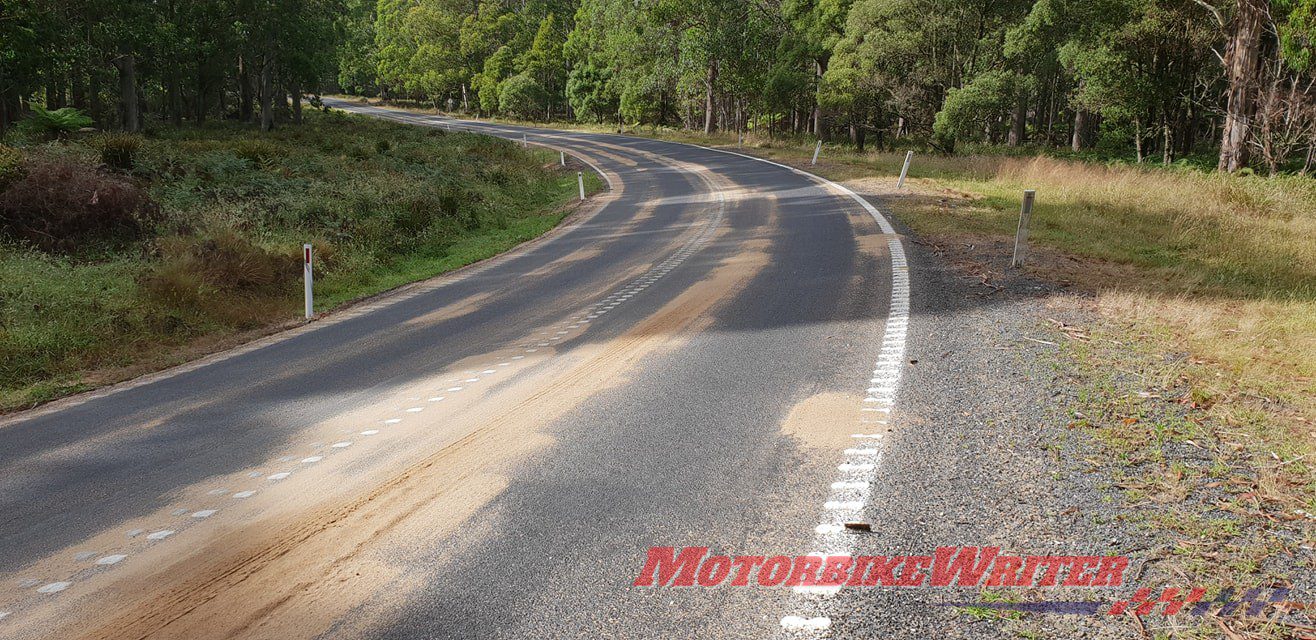
“It’s pretty hard/near impossible to get the application rate just right since the bleeding of the surface is not uniform,” he says.
“Therefore it is usual to over-apply the sand or dust, but sweep off the excess ASAP.
“Until the sweeping is done, appropriate ‘slippery surface’ signage should be in place.
“I would expect the sweeping to be carried out within 24 hours. It may be necessary to re-apply the sand on subsequent hot days followed by sweeping.”
Other long-term solutions require analysis, design and specialist equipment to implement, Ian says.
Treatments include application of a “fog” coat of bitumen, rolling in another layer of aggregate, removal of excess bitumen by water blasting and replacement of the entire seal.
Ian says the analysis, design and resourcing of these treatments may take a couple of months to a year to organise and finance.
Mt Glorious melts
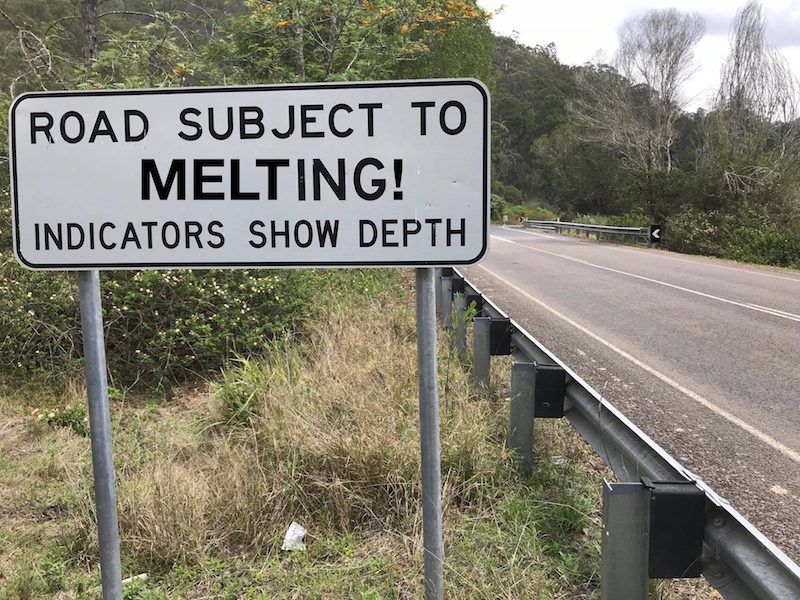
Similar melting tar on the Mt Glorious Rd west of Brisbane in 2017 resulted in at least one rider crashing.
Queensland Main Roads spent months working on the road to fix the issue with various methods.
More information about road conditions across Queensland are available on TMR’s website or by phoning 13 19 40.


